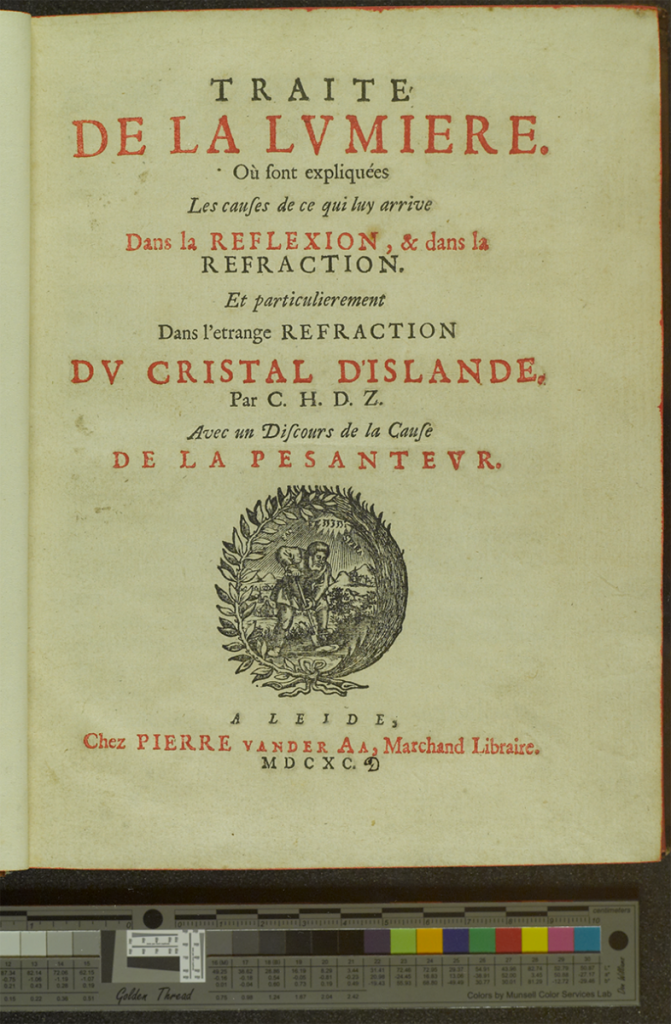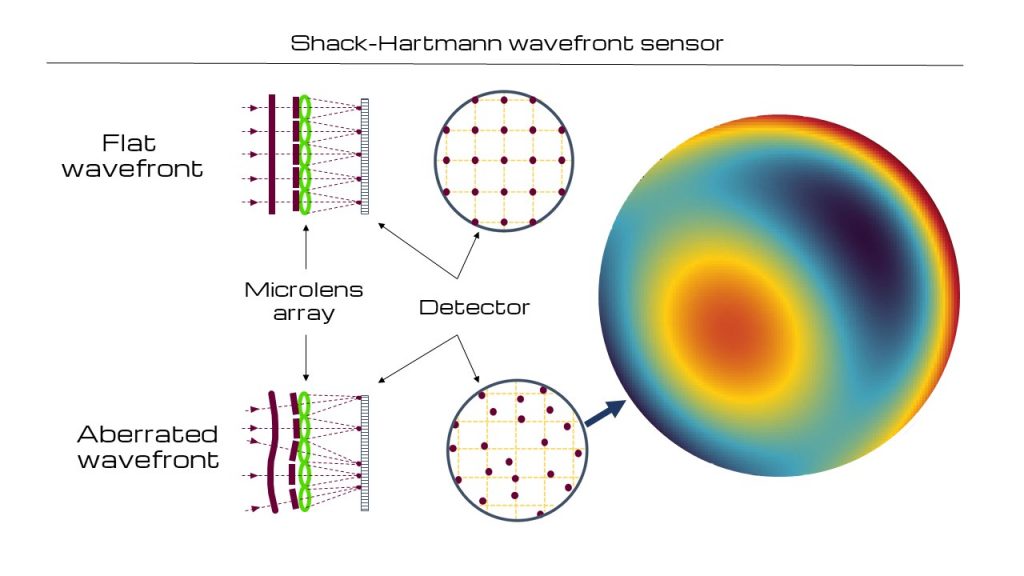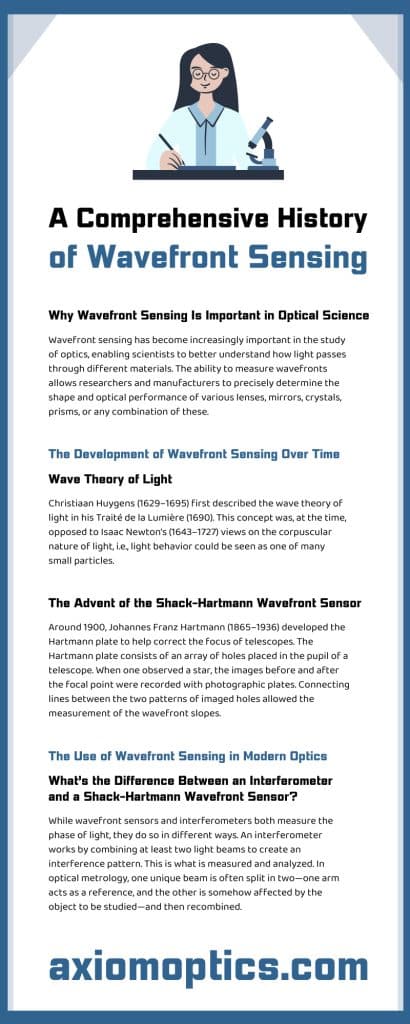A Brief history of Shack-Hartmann wavefront sensing
Wavefront sensing has a long history of use in optics. This brief but comprehensive history of Shack-Hartmann wavefront sensing will give you an understanding of how valuable the technology has been in the advancement of optics, imaging, and exploration.
Visit this page to understand what is wavefront sensing: what is a wavefront sensor?
Why Wavefront Sensing Is Important in Optical Sciences
Wavefront sensing has become increasingly important in the study of optics, enabling scientists to better understand how light passes through different materials. The ability to measure wavefronts allows researchers and manufacturers to precisely determine the shape and optical performance of various lenses, mirrors, crystals, prisms, or any combination of these.
Wavefront sensing also enables scientists to quantify and break down aberrations that can affect the quality of an experiment or an optical system—for example, the sharpness or intensity of images being produced; the injection and coupling efficiency into optical fibers; or the fluence obtained by the focalization of a laser—allowing them to correct the aberrations accordingly.
The Development of Wavefront Sensing Over Time
To understand the history of Shack-Hartmann wavefront sensors, it might be useful to rewind a bit to the appearance of the concept of the wave itself. Indeed, the wave nature of light hasn’t always been an accepted concept.
Wave Theory of Light
Christiaan Huygens (1629–1695) first described the wave theory of light in his Traité de la Lumière (1690). This concept was, at the time, opposed to Isaac Newton’s (1643–1727) views on the corpuscular nature of light, i.e., light behavior could be seen as one of many small particles.
We would have to wait another century to see the experiments of Thomas Young (1773–1829) and the strong mathematical demonstrations of Augustin-Jean Fresnel (1788–1827) convince the scientific community of the validity of wave theory.
In 1851, Hippolyte Fizeau (1819–1896) performed several experiments on the measurement of the speed of light, which backed up the Fresnel theory (and whose results would also be explained by Albert Einstein’s theory of special relativity). Interestingly for wavefront sensing, these experiments were performed using an interferometric arrangement. Nowadays, Fizeau interferometers are still a reference standard for optical metrology.

The Advent of the Shack-Hartmann Wavefront Sensor
Around 1900, Johannes Franz Hartmann (1865–1936) developed the Hartmann plate to help correct the focus of telescopes. The Hartmann plate consists of an array of holes placed in the pupil of a telescope. When one observed a star, the images before and after the focal point were recorded with photographic plates. Connecting lines between the two patterns of imaged holes allowed the measurement of the wavefront slopes. The correction of the telescope forming the image at the focal plane could then be calculated. For a well-corrected system, the rays passing through the holes of the mask should all converge to the same (focal) point.
In 1971, Roland Shack (1927–2019) and Ben Platt developed an optimized design of the Hartmann plate in response to a call from the US Air Force to optimize images of satellites acquired by ground telescopes that were affected by the propagation of light through the atmosphere. In the proposed design, the array of holes was replaced by an array of micro-lenses, which made the wavefront sensing method much more efficient, as light is concentrated by each micro-lens instead of being mostly stopped by the mask. Combined with the advent of CCD cameras, this new approach made the technique much faster and easier to use and adapted to “low-light” applications such as astronomy.

Since then, the use of Shack-Hartmann sensors in optical metrology has continued to grow. Starting in 1974, they were used for laser testing. In the following decade, they were used for adaptive optics, measuring the profile of cornea, optical system alignment, and semiconductor wafer characterization. In 1996, Shack-Hartmann wavefront sensors were implemented in a closed-loop control in combination with deformable mirrors to remove eye aberrations and improve the imaging of the fundus.
Nowadays, the Shack-Hartmann wavefront sensor has become the most commonly used zonal sensor in optical metrology and adaptive optics.
The Use of Wavefront Sensing in Modern Optics
What’s the Difference Between an Interferometer and a Shack-Hartmann Wavefront Sensor?
While wavefront sensors and interferometers both measure the phase of light, they do so in different ways. An interferometer works by combining at least two light beams to create an interference pattern. This is what is measured and analyzed. In optical metrology, one unique beam is often split in two—one arm acts as a reference, and the other is somehow affected by the object to be studied—and then recombined. Most common arrangements in optical metrology are Fizeau interferometers and Twyman-Green interferometers.
Shack-Hartmann wavefront sensors, on the other hand, measure the slopes of the wavefront from a single beam by measuring the position—displacement—of an array of spots focused by a lenslet array on a camera.
Here Why Do Shack-Hartmann Wavefront Sensors Stand Out?
It is worth mentioning that, over the history of modern optics, several wavefront sensing methods have been developed. They can be grouped in several main families: zonal sensors (Shack-Hartmann, pyramid sensors, Schlieren imaging); modals sensors (curvature, phase diversity sensors); interferometric techniques (wavefront shearing); or algorithmic-based.
The advantages of the Shack-Hartmann wavefront sensor lie in its large dynamic range together with very good accuracy; excellent optical efficiency; and its ability to work with white light or incoherent sources, either continuous or pulsed.
Wavefront sensing has come a long way since its earliest concepts, and today it plays an important role in the advancement of optics research, allowing us to gain new insights into the behavior of light. Understanding how wavefronts behave as they pass through different materials, optical components, and systems has proven to be of utmost importance in optical manufacturing, space and astronomy, ophthalmology, eye surgery, microscopy, lasers, free space optics, and optical telecommunications.
Not only have Shack-Hartmann wavefront sensors proven to be particularly useful for quality control and alignment of complex optical systems, but they are also perfect tools for adaptive optics closed-loop control. This comprehensive history of wavefront sensing has provided an overview on how far the technology has gone and how we can use it in modern optics.
Click here for our wavefront sensors products page.
Click here to visit our wavefront sensing application note for more information.

